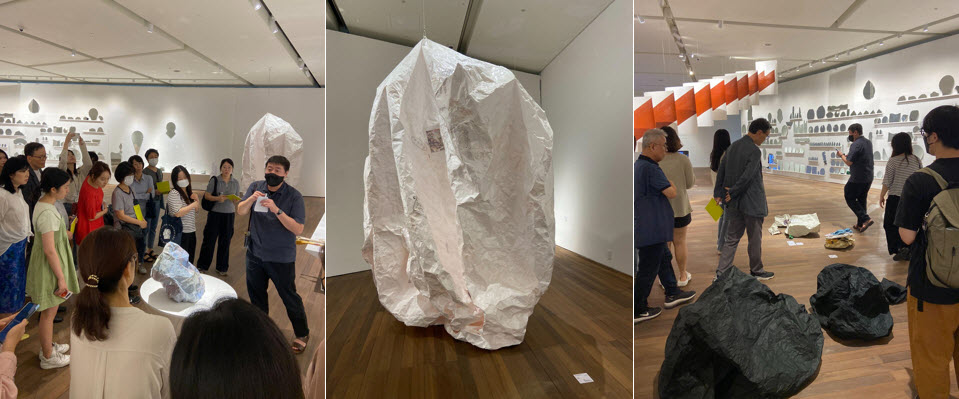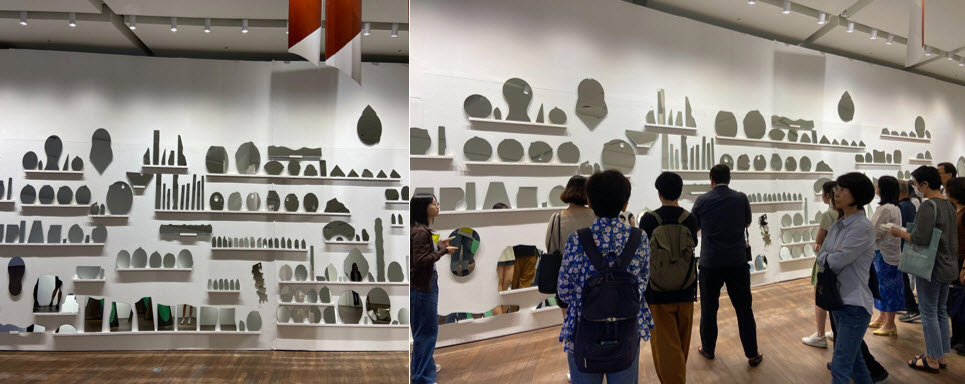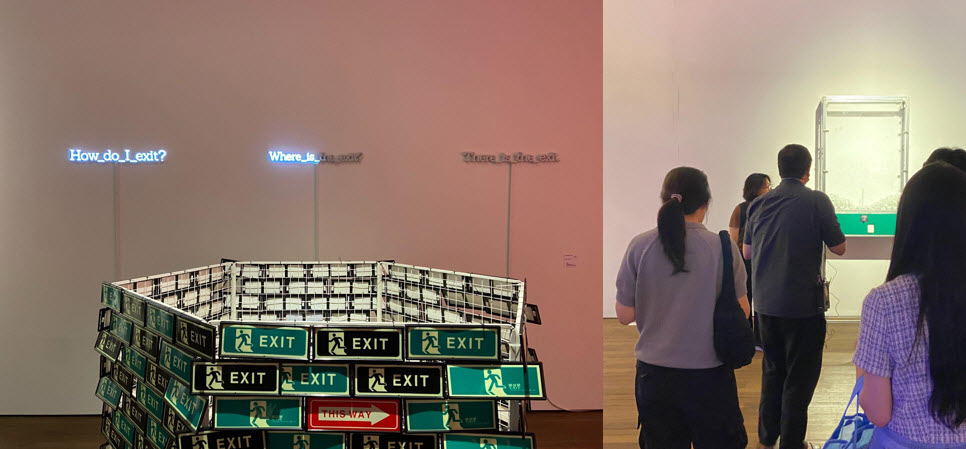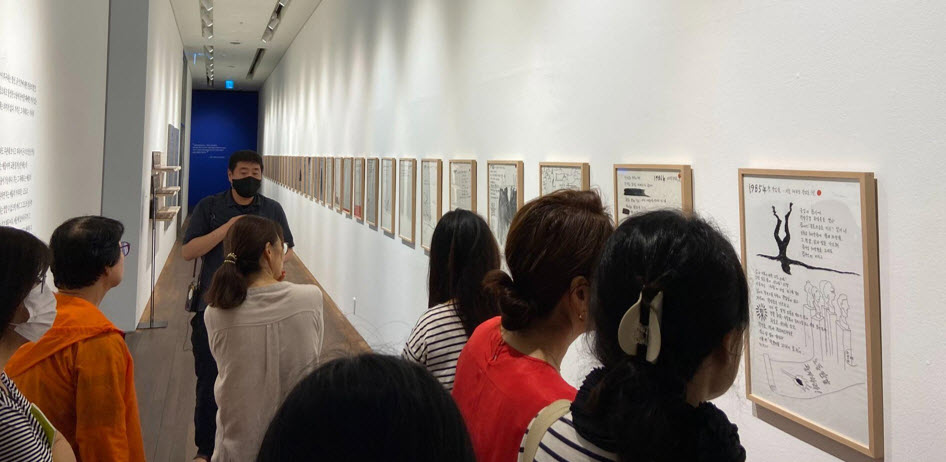On August 30, the Seoul National University Museum of Art (SNUMoA) hosted the final curatorial tour of its temporary exhibition The Journey through Art Sociology Leads to Art Philosophy - Artists’ Anthology.
The premise of the exhibition is that contemporary art overly fixates on presenting itself as philosophically profound. The exhibition placed greater emphasis on the sociological aspects of art. In a brief introduction at the beginning of the tour, Curator Taeseo Kim added that “by considering the production, distribution, and consumption of art, people may open their eyes to existing societal issues and gain new perspectives on reality.”
The Journey through Art Sociology Leads to Art Philosophy - Artists’ Anthology showcases the creative process, strenuous labor, and career anxieties of budding and veteran artists of today.

marronier (left), Jihye (center), and TORCH LIGHT (right) by Moongi Gim
A self-proclaimed “frugal sculptor,” Moongi Gim’s creative process expresses principles of utilizing inexpensive materials, making use of space while not inconveniencing others, employing oneself in transporting one’s own art, packing art pieces in compact ways that do not waste space, and imposing no limits on the composition and form of one’s own art. Staying true to these principles is Gim’s attempt at liberating his artistic products from the logic of market capitalism. The installation pieces marronier, Jihye, and TORCH LIGHT are constructed with the humble and unorthodox materials of crumpled paper and scotch tape.

Mirror Shop by Sungkyun Choi
Sungkyun Choi’s Mirror Shop is an installation piece of mirrors that line an entire wall of shelves, with each mirror individually priced, as if available for purchase. Contrary to the notion that the greater the size of the artwork, the heftier its price tag, Choi’s mirrors were more expensive the smaller they were. By relying on the rationale that larger mirrors are less processed and thus worthy of a lower price point, Choi encourages visitors to reflect on the relationship between art and artists’ labor.

Where is the exit? by Min-Jae Kim
Min-Jae Kim’s Where is the exit? highlights the darker realities of forging a career as an artist. The installation consists of three pieces: flickering neon signs asking how and where to exit, a capsule vending machine of arbitrary single-word “answers,” and 100 emergency exit signs arranged in a hexagonal shape. Where is the exit? captures artists’ yearning to flee the bleakness of their circumstances when there seems to be no designated path for escape.

The Process of Moving My Studio (1985-2017) by Jungyeob Jung
Though created using the traditional media of ink on paper, The Process of Moving My Studio (1985-2017) is unique in how its entire creation spans over three decades. Each sheet of paper is dedicated to a year of Jung’s existence as a female artist in Korean society and documents the highs and the lows of her lived experience. By candidly detailing the mundanity of her own life, including countless moves, juggling jobs, growing a family, and burning the midnight oil to work on her craft, Jung dispels the myth that the life of an artist is one of glamor and thrill. Instead, the different fragments of the artwork are united by a shared sense of perseverance and resilience.
According to Taeseo Kim, the exhibition at SNUMoA allowed Jung’s piece to be displayed in chronological order for the first time since its completion.
The Journey through Art Sociology Leads to Art Philosophy - Artists’ Anthology ran from June 23 to September 10. Visit SNUMoA’s official website for more updates on upcoming exhibitions.
Written by Hee Seo Lee, SNU English Editor, heeseolee@snu.ac.kr
Reviewed by Professor Jiewuh Song, Department of Political Science and International Relations, jiewuh@snu.ac.kr

